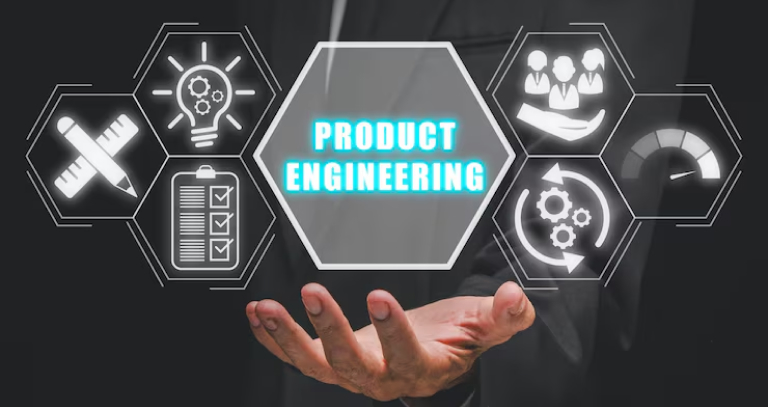Prioritizing MVP Features: Why Should You Care?
Ditstek BlogsBuilding products is hard; building great products is harder.
When it comes to launching a new product, there is a tough balance to strike between the speed of delivery and the quality of execution. Nevertheless, building great products require you to make smart choices along with skills, dedication, and discipline. But, too often many businesses focus solely on delivering a solution quickly without considering why they are doing so. Also, sometimes they try to push all the features and functionalities into the MVP, causing a risk to the budget and ending up failing.
Result? Bloated products that align with the plan but offer little value. This is where prioritizing MVP features comes into the picture. So if like many businesses you are struggling to get traction with your MVP or figure out which features to include in an MVP and which ones to leave, this blog is for you.
Why Should You Care About Prioritizing MVP Features?

The whole idea behind an MVP is to develop an essential offering to gather feedback from the very first customers. Given that there is a lot of user interest in the MVP, it paves the way for future product releases. Without a smart approach to MVP feature prioritization, product teams waste time developing features that have a very low market value.
Clearly, prioritizing MVP features is important because it keeps businesses from spending time, money, and resources on non-so-important features. Rather than stressing about adding all the features, it allows companies to focus on improving the core functionality of their products and delivering value. One significant benefit of prioritizing essential features is, it speeds up the release of an MVP; thus, businesses can receive user feedback quickly and make rapid improvements to the products.
Also Read: SAAS Based B2B2C Workflow Automation for Rental Businesses
How to Define Features in an MVP?
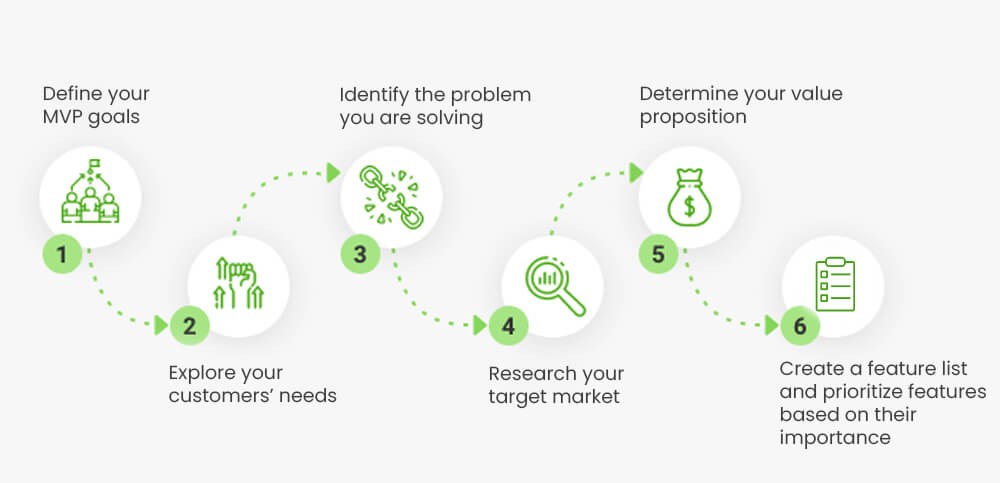
Before implementing features in an MVP, it is crucial to understand factors, like the target audience, the problem you are trying to solve, how will your product provide a solution, and how are you going to create a product that sets you apart from your competitors. Here is the checklist for defining the MVP features:
- Explore your customers’ needs.
- Research your target market.
- Identify the problem you are solving.
- Define your MVP goals.
- Determine your value proposition.
- Create a feature list and prioritize features based on their importance.
Below is the criteria you can use to prioritize MVP features-
Value
Prioritize features that will deliver value to the users.
Impact
Features that will impact the user experience positively should be prioritized.
Differentiation
Focus on the features that make your product different from that of your competitors.
Feasibility
Prioritize features that are technically feasible features that can be developed within the budget and timeline.
Also Read: SAAS-Based Automated Customs Clearance Software For Logistics
Top 5 MVP Feature Prioritization Models
Feature Priority Matrix
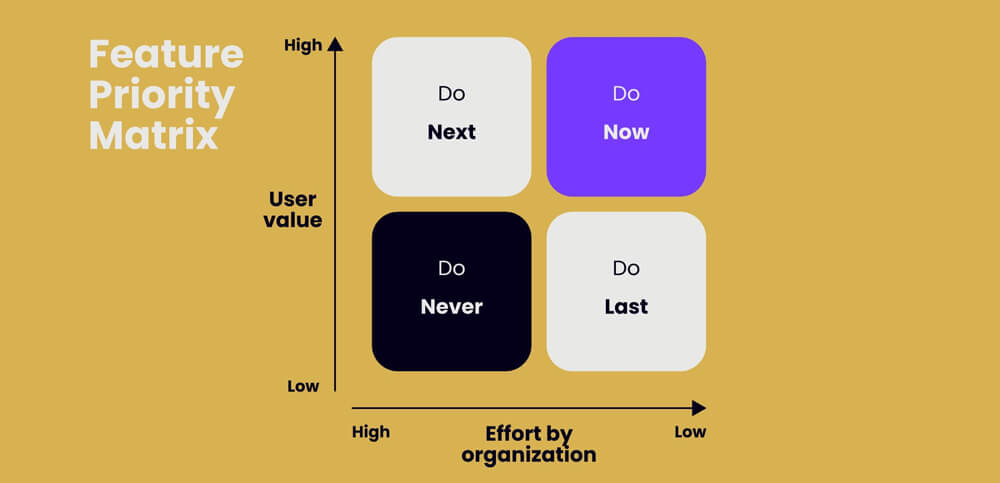
The feature priority matrix helps product development teams evaluate three key factors associated with adding an MVP feature:
Impact: Impact measures the value a feature will provide to the customers. High-impact features improve user experience and should be prioritized.
Effort: Effort estimates the number of resources needed to bring a feature to fruition.
Risk: Risk estimates the degree of difficulty in implementing a feature.
While high-impact, low-effort products are good, high-impact, high efforts can be valuable. However, it requires careful planning.
MoSCoW Matrix
MoSCoW is one of the most popular feature prioritization models that divide possible features into Must-haves, Should-haves, Could-haves, and Will not-haves categories.
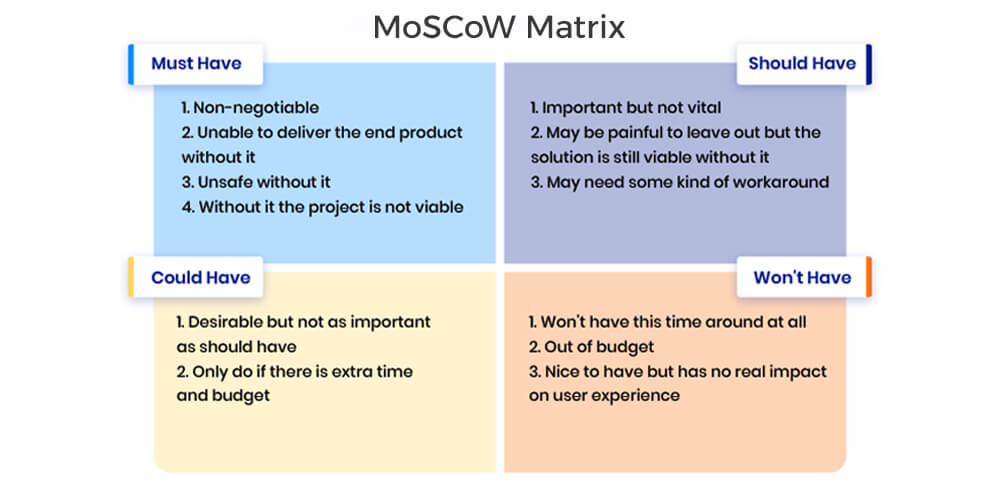
- Must haves: These are the most critical features that will make your MVP viable.
- Should haves: It includes critical features you want to add to the list.
- Could haves: These are the features that might be important to improve user experience, but are not necessary for an MVP. They are generally saved for the later updations of a product.
- Will not haves: These are unnecessary features, and adding these to the list would result in wasted efforts.
Kano Model
It is a user-oriented MVP feature prioritization model that categorizes potential features based on how important they are for improving user experience. Below is the criteria it uses to group features:
- Threshold: These are the fundamental features that ensure the usability of your product.
- Performance: They are not necessary but improve user experience.
- Delighters: These are non-essential features, but they have the potential to delight the users.
User Story Mapping
This technique outlines the user journey and the features required to complete each step. Visualizing customer journeys or user story mapping helps product teams prioritize MVP features by putting themselves in customers’ shoes.
Feature Buckets
This technique involves brainstorming possible features and categorizing them based on their impact on business. Customer requests, metric movers, and delighters are the three most common buckets:
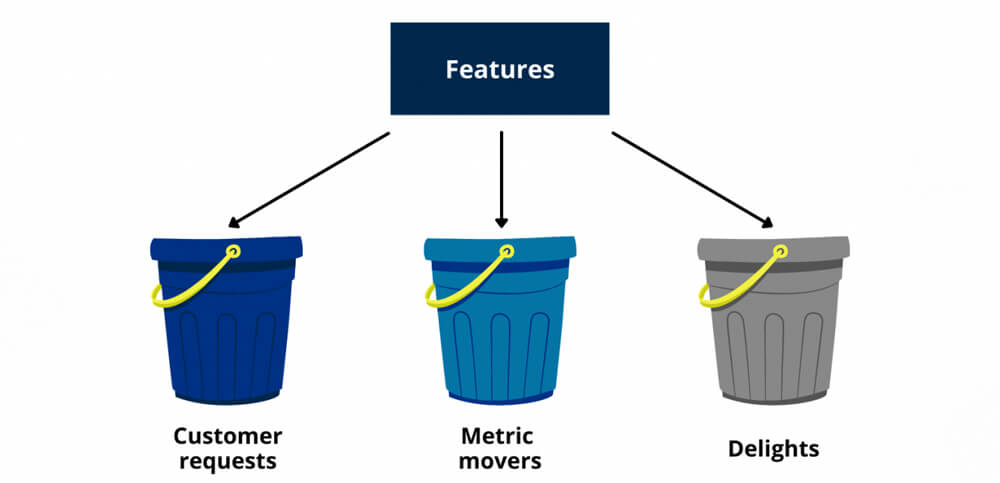
- Customer Requests: These include a lot of customer requests or recommendations that you may not want to implement as they involve high effort and low impact. Some requests or suggestions can prove to be true game-changers.
- Metric movers: These are the features that you think will improve the key metrics, like customer retention, customer satisfaction, etc.
- Delighters: These are the features you have tried in testing and customers love them. Generally, these are out-of-the-box ideas very few people wish to include.
Also Read: Component Form Builder
Choose Your MVP Features Wisely
There is no one-size-fits-all answer to prioritize features as every company has a different approach depending on their specific MVP strategy. Focus your UX efforts on the critical features that address the pain points of customers. Put extra effort into features that will provide your customers with long-term value. There are features that require a huge user base. If features like that are not important to the core functionality of the product, keep them lower on the priority list. Once your product is up, you can leverage customer feedback to prioritize more features.
Contact us to know more about MVP feature prioritization.

Nidhi Thakur
With more than 19 years of experience - I represent a team of professionals that specializes in the healthcare and business and workflow automation domains. The team consists of experienced full-stack developers supported by senior system analysts who have developed multiple bespoke applications for Healthcare, Business Automation, Retail, IOT, Ed-tech domains for startups and Enterprise Level clients.
Recent Posts
Get in touch


